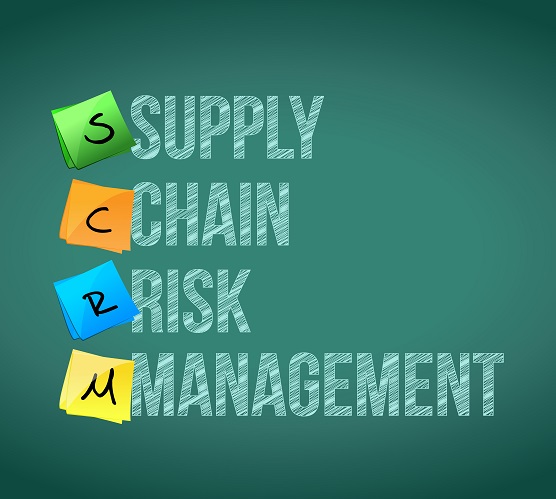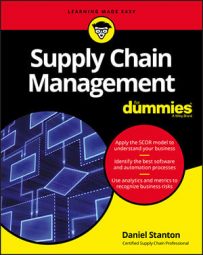 ©Shutterstock/alexmillos
©Shutterstock/alexmillosThe good news is that your options for handling any risk in the supply chain are fairly simple. You have four choices:
- Accept the risk.
- Transfer the risk.
- Avoid the risk.
- Mitigate the risk.
Accept the risk in the supply chain
Even though you know that a risk exists, you don’t always have a good way to resolve it. The risk may be relatively small, for example, or it could be so enormous that it’s impossible to avoid. In those cases, you may decide that the risk is part of the business you’re in and that you’ll deal with the consequences if the risk materializes.Following are some examples of supply chain risks that you may decide to accept:
- A forklift runs out of fuel in a distribution center.
- A supply chain manager breaks her leg while skiing.
- A giant comet collides with Earth.
Transfer the risk in the supply chain
Sometimes, you can make someone else deal with a risk for you, which is exactly what insurance companies do. You pay them for a policy, and they accept the responsibility to pay for the damages if something goes wrong. You can buy insurance to cover many of the risks that can come up in a supply chain, such as theft, fires, and accidents.In another scenario, you can write contracts with your customers and suppliers that transfer risk to them in the event that a risk materializes.
For example, you could make your suppliers deliver their products to your facility; if a shipment were to be stolen during transit, then your supplier would be responsible. Your supplier will probably charge more for their products in exchange for assuming this additional risk.
Avoid the risk to the supply chain
In some cases, the best way to deal with a risk in the supply chain is to make it go away. If you’re concerned that a certain supplier won’t be able to meet your requirements, you can switch to a different supplier.If you’re afraid that a certain port may have a labor strike, you can ship your freight through a different port. Avoiding a risk to the supply chain can be the cheapest and easiest way to deal with it.
Mitigate the risk to the supply chain
If you can’t accept, transfer, or avoid the risk, the only option left is to do something about it — that is, mitigate the risk. The goal of mitigating a risk to the supply chain is to reduce the probability, the impact, or both. In other words, you’re trying to lower the risk score.How much you need to lower the score depends on how much the risk could cost you and how much money you can afford to invest in mitigation. Generally, you should mitigate a risk to the point that you’re willing to accept it.
If one of your risks is that a customer will cancel a big order, for example, you probably want to mitigate that risk. You could talk with your customer, offer incentives, and make sure that you have a good relationship. You may not be able to eliminate the risk, but you can probably bring it down to an acceptable level and then focus your energy and resources on other parts of the business.
Commercial agreements can be used to mitigate risks in the supply chain. For example, if your risk register identifies the financial stability of a supplier as a major concern, then you might include in the terms of your commercial agreement that suppliers need to provide periodic financial updates.
The risk register shown below includes a column for actions. Adding an Action column helps you track how you are planning to manage each risk.| Risk | Probability | Effect | Risk Score | Action |
| Port strike | 9 | 9 | 81 | Avoid |
| Supplier fire | 3 | 9 | 27 | Transfer |
| Forklift breakdown | 6 | 1 | 6 | Accept |
| Comet strike | 1 | 10 | 10 | Accept |
| Canceled customer order | 8 | 6 | 48 | Mitigate |
When you choose to mitigate a risk you should also decide how it will be mitigated and who will be accountable for that work. You may need to create a project to mitigate a risk in the supply chain.
The International Organization for Standardization (ISO) has created a global standard to help companies implement risk management processes. You can purchase a copy of the ISO 31000 standard.

